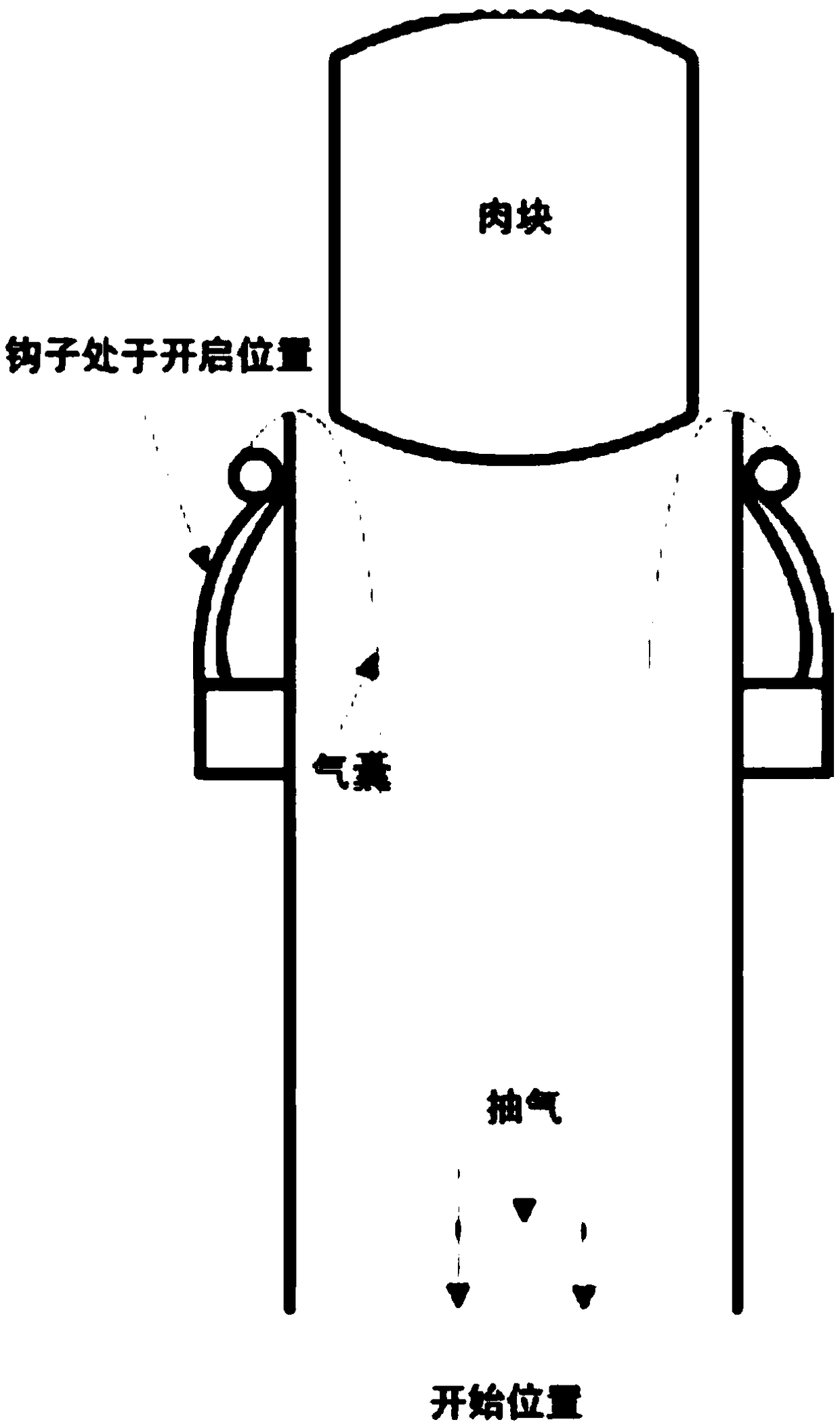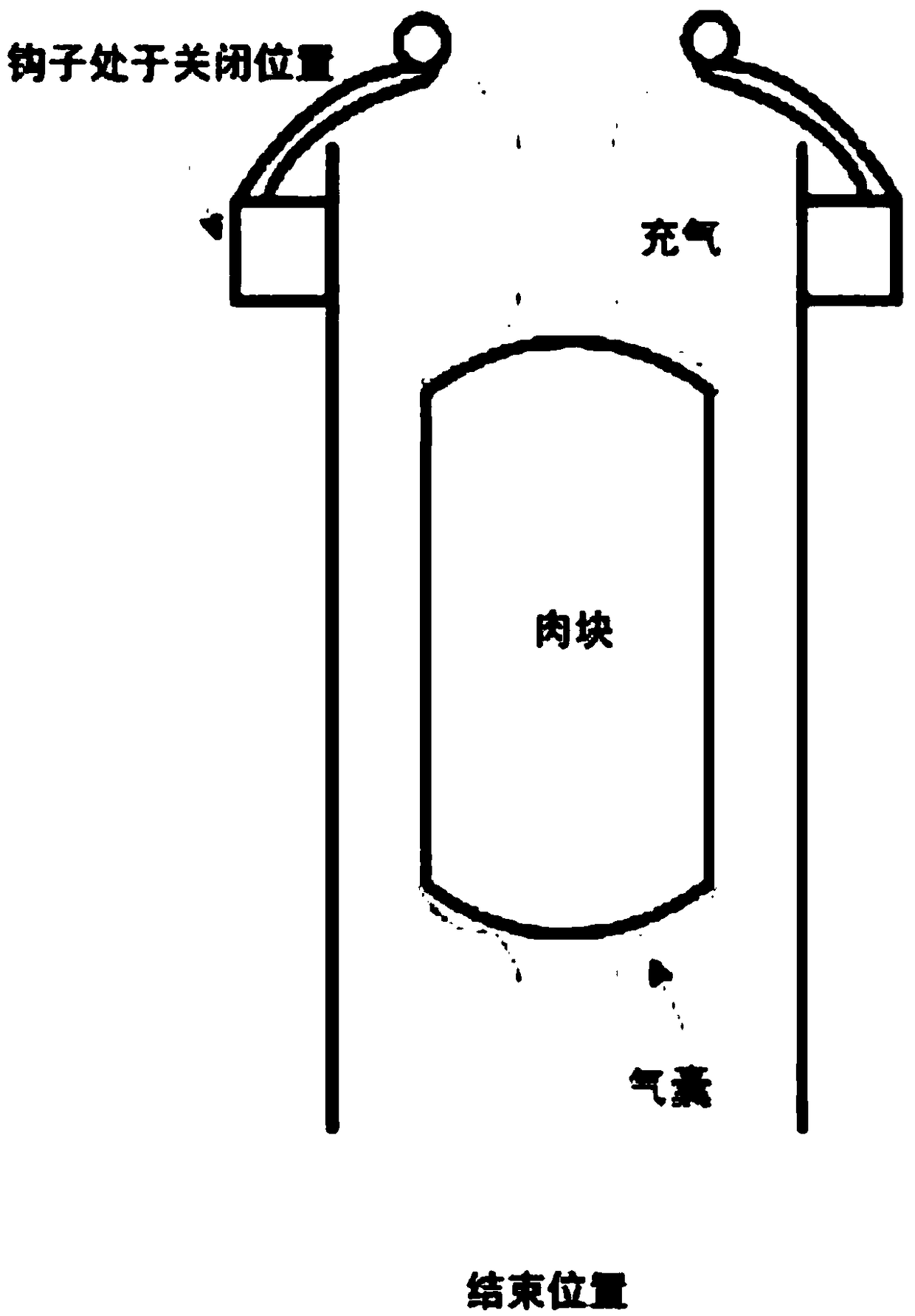Method for increasing yield rate of spare rib dish based on repeated microorganism fermentation
A technology of microbial fermentation and yield rate, which is applied in the field of food processing and microbial fermentation, can solve the problems of low yield rate, insufficient taste of ribs, and low yield rate of ribs, etc., to improve yield rate, high-quality nutritional value, and improve processing rate Effect
- Summary
- Abstract
- Description
- Claims
- Application Information
AI Technical Summary
Problems solved by technology
Method used
Image
Examples
Embodiment 1
[0059] Wash the raw pork ribs, cut into pieces, the width of the cut pieces is 5cm, then add 1.5% rice protein by weight, 0.4% transglutaminase (w / w), mix and stir for 5min, then put it into a vacuum polyethylene bag and mix Stir evenly; treat with 280MPa ultra-high pressure for 5 minutes at intervals of 2 minutes, a total of 5 treatments; after treatment, smear the ribs surface with an effective bacterial count of 5×10 7 cfu / g of Lactobacillus bulgaricus suspension, smeared with a thickness of 0.3mm, cultured at a temperature of 37°C for 10 hours, and then added 0.5% NaCl, 0.015% sodium caseinate, and 15% of the total weight of the fermented The ice water is mixed evenly, the temperature of the ice water is 3°C, and the low-temperature vacuum tumbles for 20 minutes; among them, the drum temperature is 2°C, the vacuum degree is 0.10MPa, and the tumbling speed is 8r / min; The pumping pressure was 125psi, the pumping pressure was -14psi, and the interval between pumping and gassi...
Embodiment 2
[0068] Wash the raw pork ribs, cut into pieces, and the width of the cut pieces is 4cm, then add 3.0% starch by weight, 1.5% salt, 3.5% sugar, 0.1% monosodium glutamate, 1.3% soy sauce, 1.8% cooking wine, 1.2% rice protein, 0.5% % transglutaminase (w / w) was mixed and stirred for 5 minutes, and then put into a vacuum polyethylene bag and mixed and stirred evenly; treated with 300MPa ultra-high pressure for 5.5 minutes at intervals of 2 minutes, and treated 4 times in total; after the treatment, the pork ribs The effective number of bacteria on the surface is 5×10 7 cfu / g of Lactobacillus bulgaricus suspension, smeared on the surface of ribs with a thickness of 0.5mm, cultured at a temperature of 39°C for 11 hours, and then added 0.7% of the total weight of NaCl and 0.01% of casein after fermentation Sodium bicarbonate, 16% ice water, mixed evenly with ice water temperature at 2°C, low-temperature vacuum tumbling for 30 minutes; wherein, the drum temperature was 3°C, the vacuum ...
Embodiment 3
[0077] Wash the raw pork ribs, cut into pieces, the width of the cut pieces is 3cm, add 2.5% starch by weight, 2.0% salt, 3.0% sugar, 0.15% monosodium glutamate, 1.2% soy sauce, 1.6% cooking wine, 2.0% rice protein, 0.3 % transglutaminase (w / w) was mixed and stirred for 4 minutes, then put into a vacuum polyethylene bag, mixed and stirred evenly; subjected to 250MPa ultra-high pressure treatment for 6 minutes at intervals of 3 minutes, and treated 5 times in total; after the treatment, the pork ribs The effective number of bacteria on the surface is 5×10 7 cfu / g Lactobacillus bulgaricus suspension, which is smeared on the surface of ribs with a thickness of 0.1mm, cultured at a temperature of 42°C for 12h, and then added 0.6% NaCl and 0.012% casein of the total weight after fermentation Sodium bicarbonate, 17% ice water, mixed evenly with ice water temperature at 1°C, low-temperature vacuum tumbling for 25 minutes; among them, the drum temperature was 4°C, the vacuum degree wa...
PUM
 Login to View More
Login to View More Abstract
Description
Claims
Application Information
 Login to View More
Login to View More - R&D
- Intellectual Property
- Life Sciences
- Materials
- Tech Scout
- Unparalleled Data Quality
- Higher Quality Content
- 60% Fewer Hallucinations
Browse by: Latest US Patents, China's latest patents, Technical Efficacy Thesaurus, Application Domain, Technology Topic, Popular Technical Reports.
© 2025 PatSnap. All rights reserved.Legal|Privacy policy|Modern Slavery Act Transparency Statement|Sitemap|About US| Contact US: help@patsnap.com



